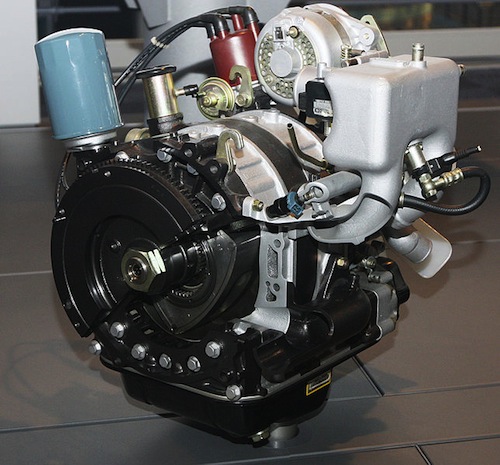 Intelligent Design
Intelligent Design
If Humans Tweak Cell Machines, Is It Intelligent Design?

Among molecular machines in the cell, ATP synthase is one of the crown jewels. Virtually ubiquitous in living things, these rotary engines of life continue generating knowledge and inspiration for human designers.
Recently, we asked, “If Humans Write Genetic Code, Is It Intelligent Design?” Let’s follow up with a similar question: this time, whether humans observing a “natural” molecular machine in the cell can come to understand its design principles well enough to build customized versions.
Quick background: you have trillions of little rotary engines in your body providing you with a steady stream of energy pellets called ATP molecules. These ATP molecules are produced 24/7 (even in your sleep) by ATP synthase, a true rotary engine running on ions that has a rotor, stator, and camshaft. The engine operates an assembly platform that produces 3 ATP per revolution of the rotor. Your cells on a busy day can, via these engines, generate your body weight in ATP; if they ever stopped, you would be dead before you hit the floor. Like the bacterial flagellum, these rotating engines are irreducibly complex and much more efficient than any engine humans have invented.
A new paper in PNAS this week (open access) by scientists from Max Planck Institute and other European universities sought to understand why ATP synthase machines differ slightly among different organisms. The machine consists of two primary domains: the F1 part, where ATP synthesis occurs, and the F0 part, which resembles a waterwheel spinning from a flow of protons (some species use sodium ions). The ions come from the food you eat, or in the case of plants, from sunlight. Getting a steady flow of ions to run ATP synthase depends on an upstream factory of other complex motors and machines, but that’s for another time.
The PNAS paper focused on the F0 portion. It looks a bit like a carousel, with wedges called “c” subunits arranged in a ring that spins (the rotor). This c-ring usually consists of 11 c-subunits; in some species, however, it can consist of 8 to 15 subunits. Biochemists have always wondered why. This paper suggests an answer: the number of subunits is a function of the energetic requirements of the organism.
The researchers looked at a mutated bacterium with a 12-unit c-ring substituting for its natural 11-unit ring; the machine still worked — but at lower ion motive force, and 20-50% reduced efficiency. From this and other considerations, they deduced that each organism produces a c-ring sized to its energetic needs. Here’s how they put it:
The high degree of compliance in the architecture of the ATP synthase rotor offers a rationale for the natural diversity of c-ring stoichiometries, which likely reflect adaptations to specific bioenergetic demands. These results provide the basis for bioengineering ATP synthases with customized ion-to-ATP ratios, by sequence modifications. (Bold added.)
Here, then, is another fine example of the seamless application of intelligent design principles, embracing natural design and human design. First, the authors detected functional design in the finely tuned adaptation of the machinery to the energy requirements of the organism (even though they assumed evolution did the designing). Then, they deduced that they could take this design principle and “tweak” it for their own purposes to create customized molecular motors.
So, as before, we invite a thought experiment: If a researcher without foreknowledge of this technology examined a microbe employing a customized ATP synthase, would he or she be justified in inferring that an intelligent cause played a role in its origin? If so, why not likewise infer an intelligent agent behind the “natural” molecular machine, since it also involves engineering principles finely tuned for efficiency and function?
Image credit: Wikicommons.
